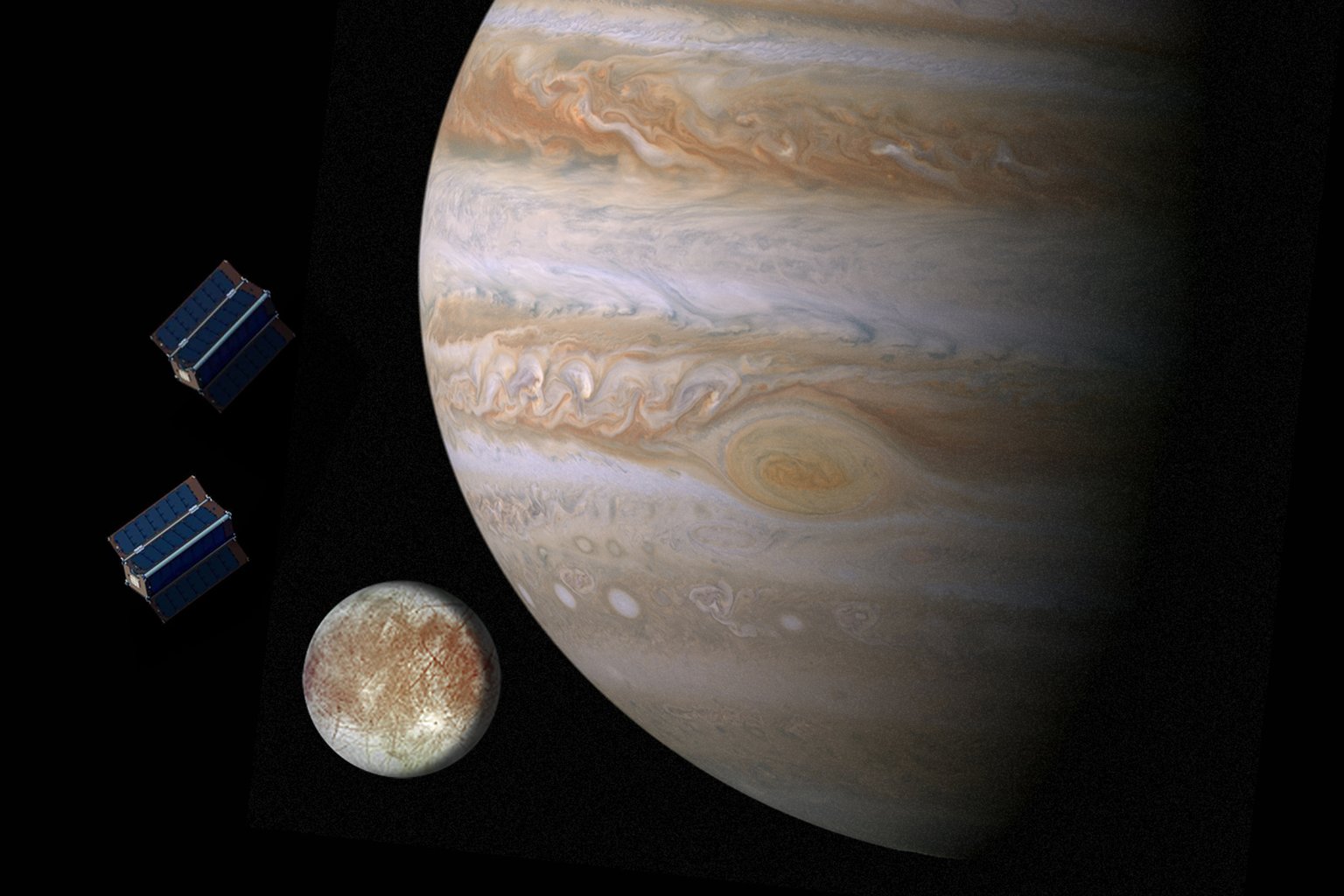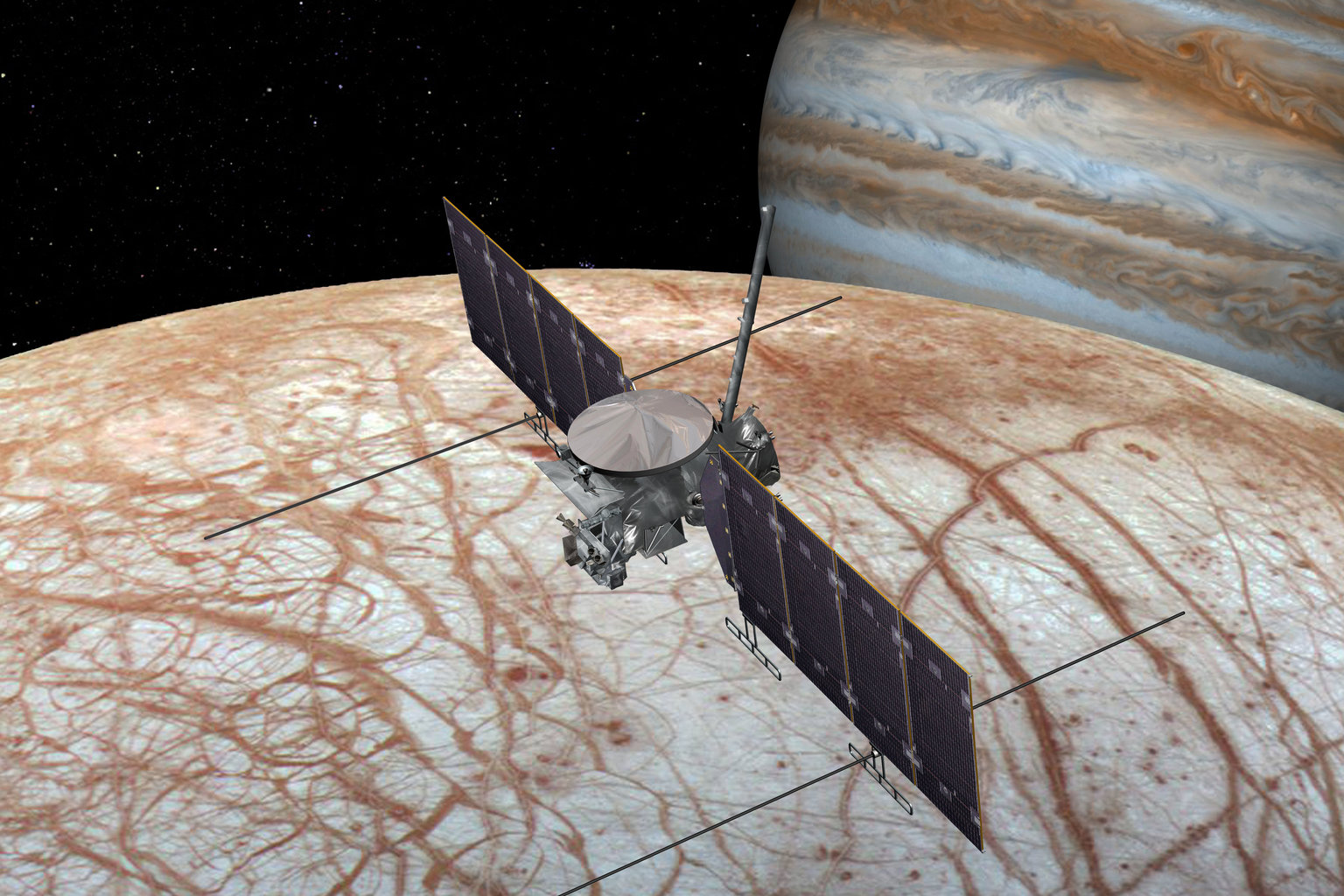NASA Could Use a Miniaturized Satellite to Test Europa Moon's Dust and Radiation

Europa, the most famous of Jupiter's icy moons, is exciting astrobiologists more and more each passing year. In 2016, the Hubble Space Telescope spotted possible vapor plumes erupting from the moon, which is believed to have a liquid ocean beneath its crust. The plumes mirrored activity that the telescope had detected three years earlier. This could indicate interaction between the atmosphere and the surface, and strengthen the likelihood that some form of life lies beneath the icy surface.
The observation is one of the points of interest behind the Europa Clipper mission, a proposed project by NASA that would swoop by the moon several times to get a closer look. Europa hasn't been looked at up close since the Galileo mission ceased operations in 2003. Though there have been flybys and missions in the Jupiter area since, none have targeted Europa.
A new paper talks in detail about a proposed mission that could show more about Europa's dust and radiation environment, which could influence its habitability. It would involve a CubeSat, a nanosatellite with a mass no greater that 10 kilograms that could be deployed as a secondary payload on a launch vehicle, providing a cost-effective means of research.
In 2014, NASA asked several universities to propose possible CubeSat missions to ride along with a larger Europa mission, such as Europa Clipper. The paper, appearing in the journal Acta Astronautica, discusses one of the CubeSat proposals, called Europa Radiation and Dust Observation Satellite (ERDOS).
"We don't have a very good understanding of how frequent these plumes are on the surface of Europa," said lead author Ashish Goel. "Although possible, it would be quite unlikely for the spacecraft to fly directly through one of them to study the composition of the particles it contains."
"The dust environment around Europa is primarily made up of particles that have been kicked up from the surface of Europa by meteoroid impacts," he noted. "Therefore, by studying the composition of these dust particles, we are indirectly studying the composition of the surface of Europa."
ERDOS would help answer other open questions. One is the radiation environment on Europa. While harsh, the high-energy particles can lead to the formation of oxygen, carbon dioxide, and other molecules associated with life, Goel said. Further, when ERDOS impacts the surface of Europa at the end of its mission, the crater formed by this event could provide more clues as to how thick Europa's icy surface is.
Breaking space news, the latest updates on rocket launches, skywatching events and more!
ERDOS would measure dust by deploying panels from the satellite to serve as impact surfaces. When the dust particles hit these panels, the particles produce an optical flash and a plume of plasma that can be detected by instruments. Radiation is measured using solid-state silicon detectors.
One big limitation for the CubeSat is its expected lifespan in Europa's high radiation environment, and the lack of solar power available. The mission would only last about 20 hours. That said, investigators would expect to make the most of it, using off-the-shelf components that can survive the radiation environment to keep the cost down.
"The ERDOS concept provides an example of how CubeSats can be used to increase the science return despite their limitations in terms of radiation hardness, thermal control, power and propulsion capabilities," Goel added. "These ideas can be easily extended to missions around other objects in the solar system."
Originally published on Seeker.

Elizabeth Howell (she/her), Ph.D., was a staff writer in the spaceflight channel between 2022 and 2024 specializing in Canadian space news. She was contributing writer for Space.com for 10 years from 2012 to 2024. Elizabeth's reporting includes multiple exclusives with the White House, leading world coverage about a lost-and-found space tomato on the International Space Station, witnessing five human spaceflight launches on two continents, flying parabolic, working inside a spacesuit, and participating in a simulated Mars mission. Her latest book, "Why Am I Taller?" (ECW Press, 2022) is co-written with astronaut Dave Williams.

